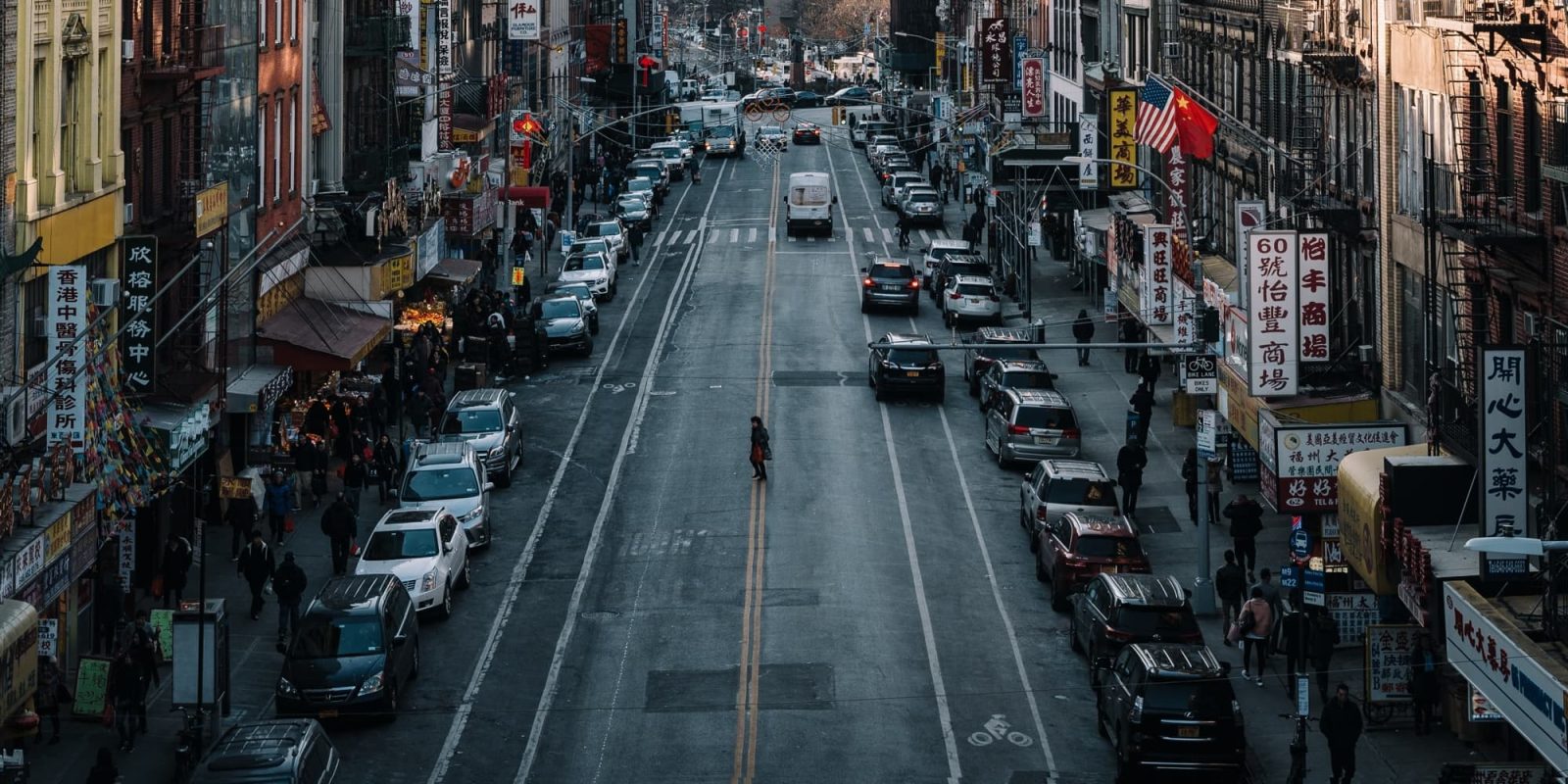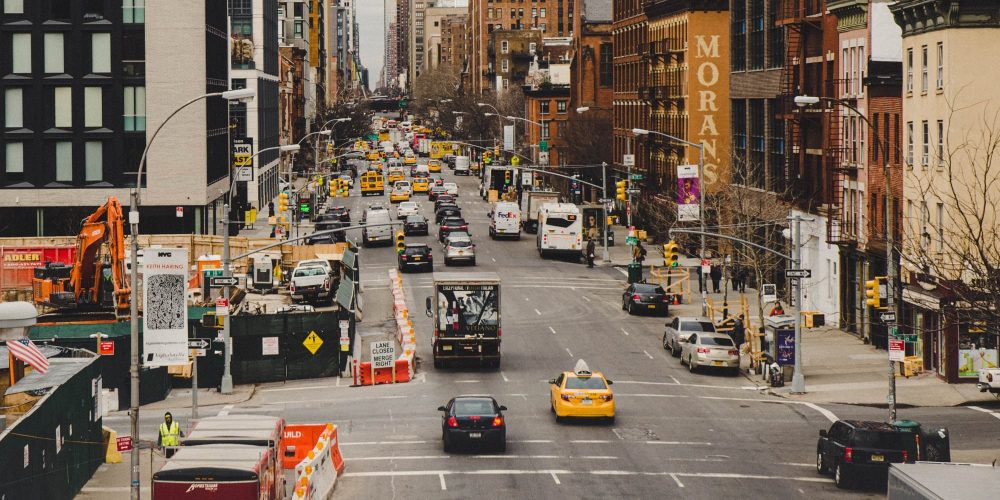NYC’s Plan to Repurpose Street Space

Introduction
COVID-19 had a significant impact on New York City’s transportation needs, leading to the repurposing of road space for non-car use. This transformation included the creation of bike lanes, public seating, and urban parks, turning previously congested roads into public spaces that benefited a wider group of residents.
Recognizing the benefits of repurposing streets, NYC is now considering making these changes permanent.
The NYC 25×25 Plan
The city has introduced a new plan called NYC 25×25, which aims to convert 25% of NYC’s street space into walkable pedestrian plazas, bike lanes, green space, and bus lanes by 2025. This plan aligns with the Sustainable Development Goals (SDGs) set by the United Nations to create sustainable cities and communities.
Benefits of Repurposing Street Space
The current dominance of cars on NYC streets does not benefit most city residents or the environment. Traffic congestion leads to slow-moving vehicles, contributing to carbon emissions, air pollution, and urban grime. Pedestrians and cyclists face challenges navigating crowded roadsides, often obstructed by parked vehicles and piles of trash. Additionally, the city experiences a significant number of pedestrian and cycling deaths caused by cars.
By repurposing street space, NYC can improve the city’s cleanliness, reduce pollution, and better serve its residents.
The 25×25 Proposal

The Transportation Alternatives group, behind the 25×25 proposal, plans to create 500 miles of dedicated bus lanes, 500 miles of protected bike lanes, and implement secure garbage containers to prevent trash accumulation on sidewalks. The proposal also aims to encourage community use of car-free roads. If implemented, this plan would reclaim the equivalent of 13 Central Parks worth of public space from cars.
Endorsement by NYC Mayor Eric Adams
NYC Mayor Eric Adams has endorsed the 25×25 plan, emphasizing the importance of creating streets that prioritize people over cars. He envisions streets where residents can ride, skateboard, walk, shop, and enjoy the outdoors. This aligns with the SDGs of creating sustainable cities and communities.
A Global Movement
The shift towards repurposing street space is part of a larger global movement to create people-centric cities. Cities like Paris have implemented car bans in their city centers, prioritizing pedestrians and personal vehicles like bikes and scooters. Many countries also offer tax incentives for citizens who choose to ride bikes instead of driving cars.
Conclusion
NYC’s plan to repurpose street space aligns with the SDGs and aims to create a more sustainable and livable city. By prioritizing pedestrians, cyclists, and public transportation, NYC can reduce pollution, improve quality of life, and create a safer environment for its residents. This shift towards people-centric cities is a global trend that promotes sustainable development and healthier communities.
Image credits: Zichuan Han, Miles Rothoerl, Dylan Spangler
SDGs, Targets, and Indicators
1. Which SDGs are addressed or connected to the issues highlighted in the article?
- SDG 3: Good Health and Well-being
- SDG 11: Sustainable Cities and Communities
- SDG 13: Climate Action
- SDG 15: Life on Land
2. What specific targets under those SDGs can be identified based on the article’s content?
- SDG 3.9: By 2030, substantially reduce the number of deaths and illnesses from hazardous chemicals and air, water, and soil pollution and contamination.
- SDG 11.2: By 2030, provide access to safe, affordable, accessible, and sustainable transport systems for all, improving road safety, notably by expanding public transport, with special attention to the needs of those in vulnerable situations, women, children, persons with disabilities, and older persons.
- SDG 13.1: Strengthen resilience and adaptive capacity to climate-related hazards and natural disasters in all countries.
- SDG 15.1: By 2020, ensure the conservation, restoration, and sustainable use of terrestrial and inland freshwater ecosystems and their services, in particular forests, wetlands, mountains, and drylands, in line with obligations under international agreements.
3. Are there any indicators mentioned or implied in the article that can be used to measure progress towards the identified targets?
- Indicator for SDG 3.9: Number of deaths and illnesses attributed to air pollution.
- Indicator for SDG 11.2: Proportion of the population that has convenient access to public transport, by sex, age, and persons with disabilities.
- Indicator for SDG 13.1: Number of countries that have integrated mitigation, adaptation, impact reduction, and early warning measures into their development planning and poverty reduction strategies.
- Indicator for SDG 15.1: Proportion of important sites for terrestrial and freshwater biodiversity that are covered by protected areas, by ecosystem type.
Table: SDGs, Targets, and Indicators
| SDGs | Targets | Indicators |
|---|---|---|
| SDG 3: Good Health and Well-being | 3.9: By 2030, substantially reduce the number of deaths and illnesses from hazardous chemicals and air, water, and soil pollution and contamination. | Number of deaths and illnesses attributed to air pollution. |
| SDG 11: Sustainable Cities and Communities | 11.2: By 2030, provide access to safe, affordable, accessible, and sustainable transport systems for all, improving road safety, notably by expanding public transport, with special attention to the needs of those in vulnerable situations, women, children, persons with disabilities, and older persons. | Proportion of the population that has convenient access to public transport, by sex, age, and persons with disabilities. |
| SDG 13: Climate Action | 13.1: Strengthen resilience and adaptive capacity to climate-related hazards and natural disasters in all countries. | Number of countries that have integrated mitigation, adaptation, impact reduction, and early warning measures into their development planning and poverty reduction strategies. |
| SDG 15: Life on Land | 15.1: By 2020, ensure the conservation, restoration, and sustainable use of terrestrial and inland freshwater ecosystems and their services, in particular forests, wetlands, mountains, and drylands, in line with obligations under international agreements. | Proportion of important sites for terrestrial and freshwater biodiversity that are covered by protected areas, by ecosystem type. |
Source: electrek.co







